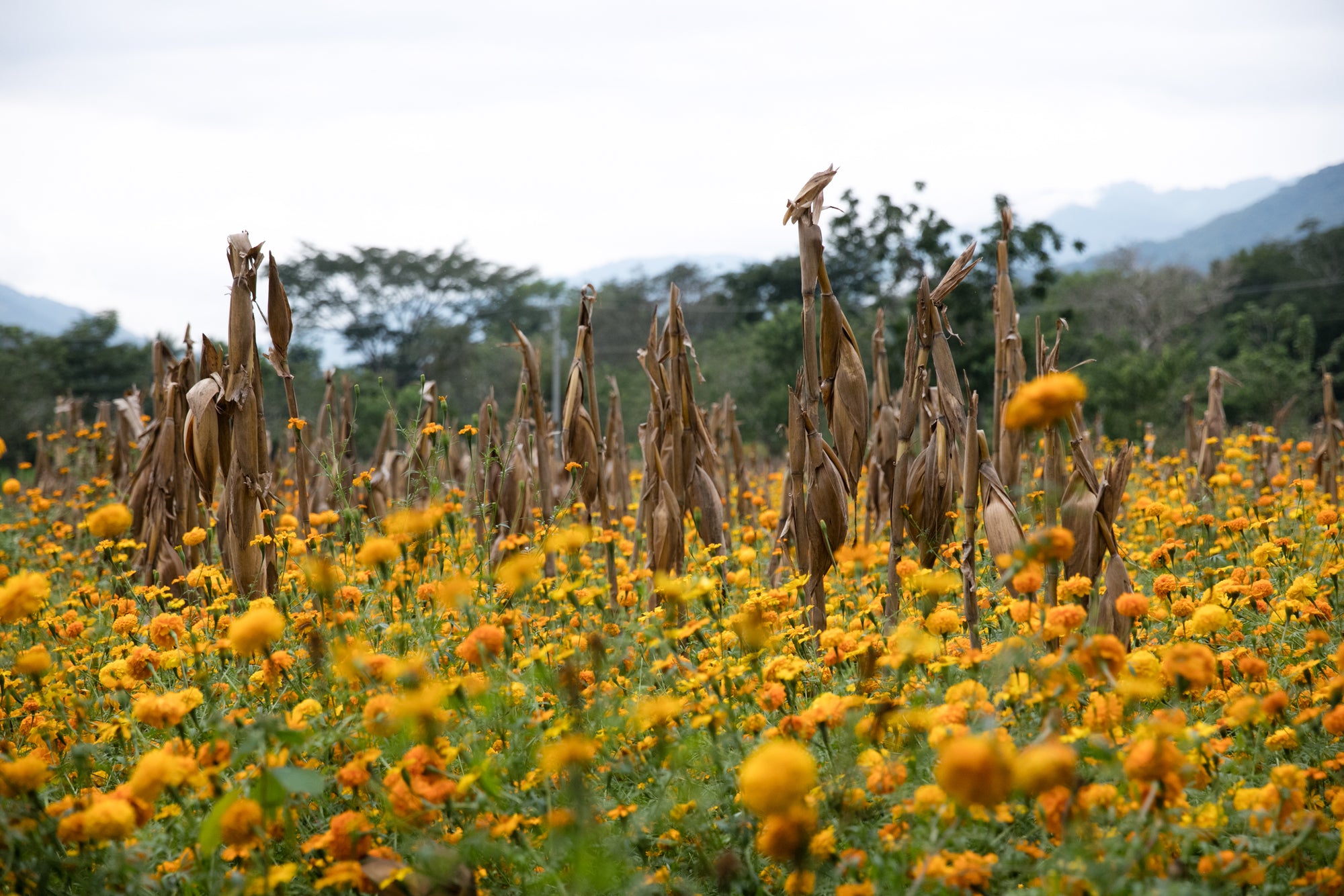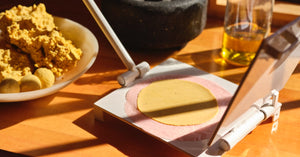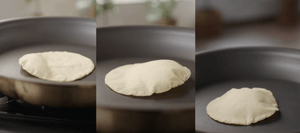What Día de los Muertos Means to Us
What Día de los Muertos Means to Us

October 28, 2022
By Allegra Ben-Amotz
Every year during the days leading up to November 1, many Mexicans and Mexican-Americans build ofrendas (altars, shrines or offerings) in their homes to honor friends and relatives who have passed away, in celebration of Día de los Muertos or Dia de Muertos (Day of the Dead), the two-day holiday that reunites the living and the dead. An integral part of Mexican identity, Día de los Muertos festivities (which date back to the time of the Aztecs, and now fuse pre-Hispanic religious rites and Catholic feasts) were the first cultural practice from Mexico to be added to UNESCO’s Intangible Cultural Heritage list in 2008.
Traditionally, families facilitate the return of the souls of their departed to Earth by laying candles and bright marigold flowers along the path from the cemetery to their homes, and placing photos of the deceased, along with their favorite foods and drinks, on their home altars. This period typically also coincides with the end of the annual cycle of corn cultivation, and it is said that the dead are capable of ensuring prosperity in the form of good harvest or misfortune depending on how well the rituals are executed.
We spoke to some of our own team members as well as cooks and chefs we admire about how they celebrate the holiday, and how they decorate their ofrendas.
Iván Vásquez Cruz
Operations Manager, Masienda
Oaxaca, MX
I grew up celebrating with the traditional custom of making the ofrenda on the 30th of October, which consists of going to the field in the morning to get materials such as: marigold flowers (these are planted regularly next to the corn plots); yacua (the bark of trees that serve as ropes, which will serve to make ties on the ofrenda, and secure branches and fruits), otate (the branch of the tree similar to bamboo, which is used to make the roof of the ofrenda); and banana leaves (used to decorate the ofrenda). On October 31, we put offerings for the little angels (deceased children), consisting of smaller breads, small candles, chocolates, and sweets. On November 1, the souls of deceased adults arrive. We make a path from the cemetery with cempasuchil (marigold) flowers to show the route to the ofrenda. On November 2, the souls retire and after midday, the house is swept, awaiting their return the following year. On this day you can begin to remove and consume the offerings that were placed on the altar.
Teresa Finney
Owner of At Heart Panadería
Atlanta, Georgia
I've always kept a little area of my home that held things like family mementos as a way to feel connected to my family back home in California, but when the pandemic hit, I started being more intentional with this space. I drape a cloth over a small table in my home and place candles, a rosary my grandmother gave to me the last time I visited home, some water and/or tequila (my family is from Jalisco, likely where tequila originated), some flowers, and of course conchas and pan de muerto. I make the pan de muerto weekly for my bakery customers, and all pan dulce reminds me of my family back home. 
Emmanuel Gutierrez
Supply Chain Coordinator, Masienda
Los Angeles, CA
In our home Dia De Los Muertos is all about taking the time to reflect on our loved ones who have passed on, both relatives and beloved pets. Our ofrenda has photos of those we're honoring and some of their favorites including: mezcal, chocolate, pet food, toys, & pan de muerto. The candles and fresh cempasuchil (marigolds) are traditionally included to help the dead find their way to the ofrenda as they're guided by the lights and aroma of the cempasuchil.
Andrea Aliseda
Food Writer
Los Angeles, CA
I’m making more of an effort to get in touch with the more spiritual aspect of the celebration, and reconnecting with ancestors that I’ve never met but feel close to, and family that is no longer with us. This year cempasuchil will be my mainstay, my ofrenda’s anchor. Aside from that, I might have a concha for my great-great-grandfather because I learned he liked those and would share them with his dog. I’ll probably put a little nug of weed for one of my uncles, a Marlboro red cigarette for my great uncle or a meringue pastry––his favorite. The idea is you set out their favorite earthly pleasures, so I’m going to try to get it right for their big night.
Marcos Mendez Nuñez
Head Prep Cook & Molinero at Ditroit
Los Angeles, LA
I’m from Valle Central in Oaxaca. Growing up, my family would get together and visit all of our godparents in a kind of posada, a traveling party. We’d go to visit their homes and bring items to add to their altars. My uncle was a butcher, so his family would bring the meat. Another family had a farm, so we’d go to their field and bring flowers. Depending how large the families are, some treat it as a weeklong celebration. Now, in the US, it’s more like one person hosting a party at their home rather than a community gathering.
Dia de los Muertos is very important for me because it’s the day my parents visit — I lost them when I was six years old, so it’s a way to have a moment with them. As a Catholic, we truly believe our loved ones come to visit us. We leave an altar because we don’t want to welcome them with nothing to offer.
I like to switch up the dishes on my personal ofrenda every year: this year, I’m making barbacoa.
Maximas Gomez
Recipe Developer
New York, NY
Growing up in Los Angeles, my family and I would celebrate with the community at various Dia de de Los Muertos celebrations across town such as the Dia y Noche de Muertos at Hollywood Forever Cemetery, Viva La Vida celebration in Santa Ana, or other smaller more local celebrations in Southeast LA. I believe Dia de Muertos is important because the holiday allows the community to hold death in a positive regard. It offers a different cultural perspective on death, which is seen as something that is natural and beautiful, not to be feared or avoided.
Mariana Alvarado
Chef & Founder of Masazul
Las Vegas, NV
I set an ofrenda to keep traditions alive for my kids who were born in the US. I grew up in Mexico City: at school, we always built enormous ofrendas every year. It was my favorite holiday, full of color and most importantly, food! It was a beautiful way to remember our loved ones who aren’t near us anymore. If we switch our pain and focus it on doing something beautiful that we know our loved ones would have enjoyed, then we have achieved the ultimate celebration of life.This year I am planning a community ofrenda with the collaboration of my good friend Mariana Romero, a local artist here in Vegas who was also born in Mexico. We invited our local community to participate by bringing a framed photo of their loved ones who have passed away.

Tony Valderrama
Masienda Operations Manager
Los Angeles, CA
My wife Anandette and I began to take it on as a tradition after we attended a novenario (a traditional, pre-Colombian procession). She had just lost her grandfather and a customer of hers invited to attend the novenario held every year at Placita Olvera. We were guided to the center to find out that the day's event was dedicated in honor of Andanette's grandfather. An indigenous Aztec group blessed us, then led us in procession throughout the whole market while chanting with incense. After the procession, the group performed a ceremonial dance and song in full attire. Andanette, her sister and aunt got to share a few stories about her grandfather. We were touched by the gathering and coming together, honoring those who passed on in all our lives. The ofrenda is how we’ve been celebrating it since. It acts as a way to merge each of the loved ones my wife and I lost who we didn’t have an opportunity to meet or who were with us for too short a time, and also to help honor their memory for future generations.
Pan de Muerto is traditional this time of year in Mexico. Check out this special recipe featuring fragrant Heirloom Red Corn Masa Harina and Heirloom Hibiscus.


